The archaeological site of Delphi in Greece was one of the most important places of the ancient world. Here’s everything you need to know about the magnificent UNESCO site, the fantastic Delphi museum and the mysterious Delphic oracle.
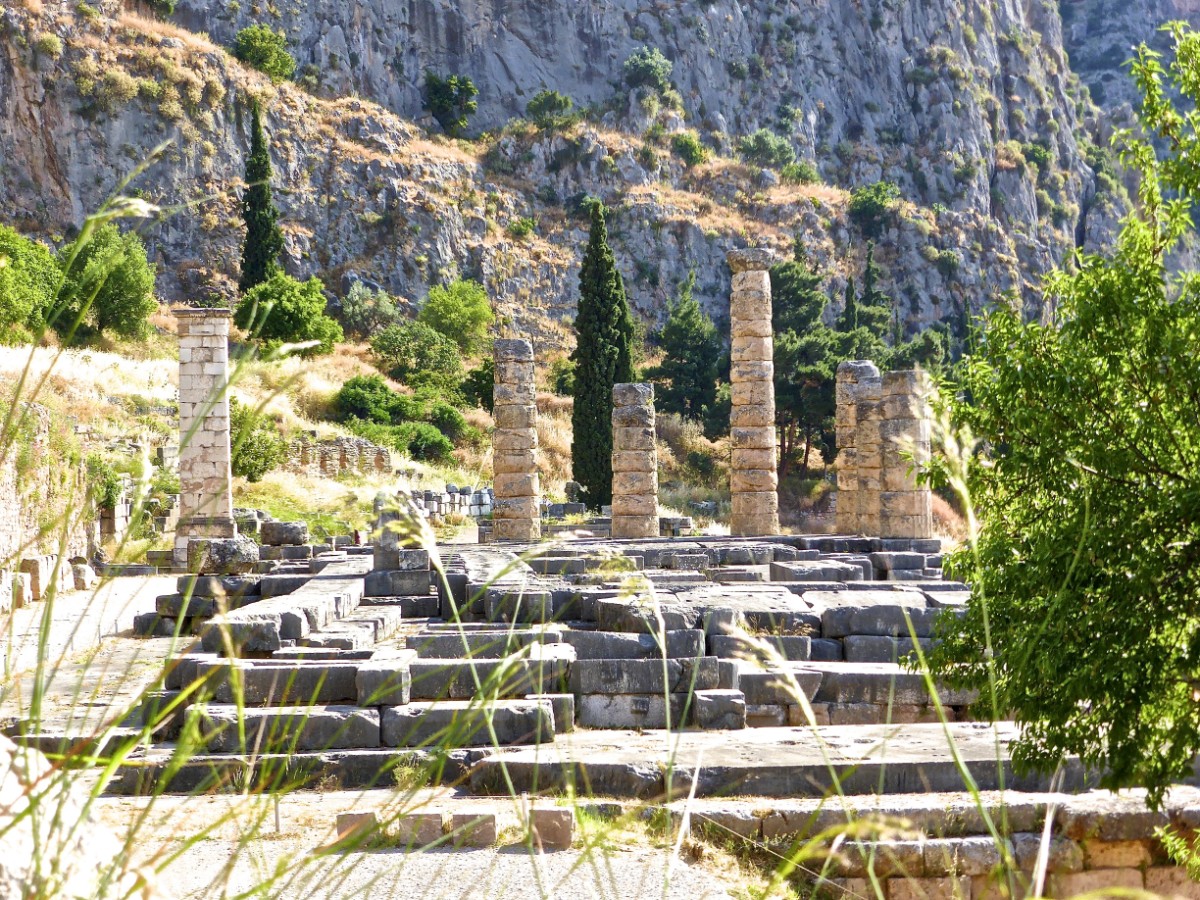
Delphi in Greece
Few places in Greece are as special as the archaeological site of Delphi. The UNESCO cultural heritage site was once considered the centre of the Greek world.
Delphi is located on the Mount Parnassos, in the Regional Unit of Fokida, Central Greece. Sitting at an altitude of 550 metres, the site enjoys a fantastic view over the surrounding area.
The magnificent natural setting, superb archaeological museum and proximity to Athens, make Delphi one of the most visited archaeological sites in Greece.

Visiting Delphi from Athens
The archaeological site of Delphi is around 190 kms (118 miles) from the Greek capital. This makes it the perfect day trip from Athens, and you should allow about 4 hours to see the whole site and the museum, including the temple of Athena Pronaia across the road.
If you are happy to drive, it is easy to get to Delphi on your own. You can book a rental car to Delphi at Discover Cars.
You can also take the public KTEL bus. There are several buses a day, and if you are going for a day trip you should try to catch the first bus of the day. It will take you around 3 hours to get to Delphi from Athens on the bus.
Anyone with some extra time on their hands could consider staying overnight in the small village of Arachova. It’s much more picturesque than Delphi itself, and there’s a good selection of tavernas and bars where you can spend your evening.
Organized tour of Delphi
People who prefer to have a guided tour of the archaeological site and the museum, can also join an organized tour to Delphi.
There are numerous companies offering such tours, often combining it with an onward trip to the magnificent Meteora monasteries.
In fact, even if you go independently, you could consider taking a guided tour, or even an audio tour of this incredible site.
Delphi visiting hours and tickets
The entrance fee to Ancient Delphi and the Museum is 20 euro, and various discounts are available. During the year, there are a few free entrance days, which you can benefit from:
- 6 March – In memory of the former Greek Minister of Culture, Melina Mercouri
- 18 April – International Day for Monuments and Sites / World Heritage Day
- 18 May – International Museums Day
- The last weekend of September – European Heritage Days
- 28 October – The OXI day, which is a public holiday
- Every first and third Sunday of the month, from November to March
Opening hours vary throughout the year. Check the official website for more information and to book your tickets to Ancient Delphi.

And now, let’s travel back to the ancient times, to see why Delphi was so important to the entire ancient civilization of Greece, and what you can see today!
Delphi in the Ancient World
The site of Delphi was Ancient Greece’s most sacred place. It was considered to be the navel (omfalós) of the earth, the center of the then known world.
According to legend, Zeus, the king of the 12 Olympian Gods, released two eagles, and let them fly free. One of the eagles left from the Far East, and the other from the Far West.
After flying for a long time, the two eagles met over Delphi. The site was then proclaimed the most important place in the ancient world.

Early History of Delphi
The oldest findings from the wider area of Delphi date from the Neolithic Era, around 4,000 BC. Many of them were discovered in the nearby Corycian Cave, known in Greek as the Korykeion Antron.
This is a cave on Mount Parnassus where ancient rituals took place. It was likely a place of worship for the God Panas as well as the Corycian Nymphs.
Archaeologists have excavated numerous artefacts, indicating the presence of a settlement and cemetery from the Mycenaean period.
The majority of the artefacts found around the ancient site date from the 8th century BC onwards. This is when the cults of certain ancient gods, including Apollo and Athena, were established in the area.
Apollo and the Site of Delphi in Ancient Greece
The first temple built in Delphi was the sanctuary of the ancient Goddess Earth. It was guarded by Mother Earth’s son, a fierce, monstrous snake called Python.
God Apollo was the son of Zeus, and one of the twelve Olympian Gods. He was the god of Light, Grace, Music and Arts, and is usually depicted as a fair, handsome young man.
One day, God Apollo left Olympus aiming to destroy Python and conquer this beautiful, sacred land. In a symbolic gesture of eliminating all ancient, primitive instincts, he killed the gruesome serpent.
After killing Python, Apollo was self-exiled, in order to purify himself of the murder.
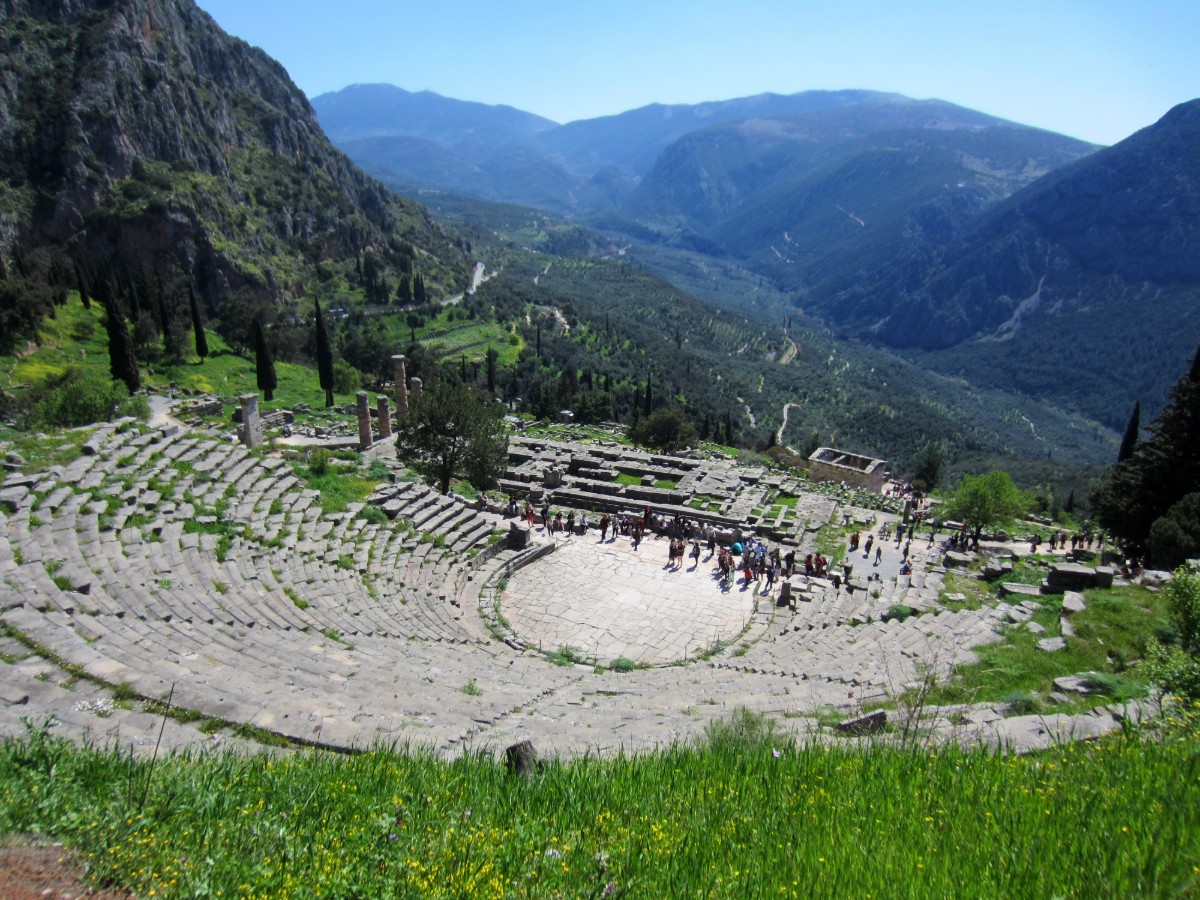
The temple of Apollo in Delphi
When his self-exile period was over, Apollo disguised himself as a dolphin, and returned to Delphi. On his way, he met a ship led by Cretan sailors, who followed along.
Upon arrival at Kirrha port, close to Delphi, the sailors built a temple to honour Apollo and became his priests. Apollo was pronounced protector of Delphi, and Zeus cast a massive stone right on the spot where Python was killed.
Apollo’s cult became prominent in the 8th – 7th century BC. This was the time when Apollo’s Sanctuary in Delphi was founded, and when the Oracle first appeared.
Later on, Delphi became the most important religious centre and a symbol of unity in Ancient Greece.
During winter months, Apollo left Delphi and emigrated to North Europe. According to legend, he spent that time with the mythical tribe of the Hyperboreans.
Apollo was a popular god all around Ancient Greece. Temples of Apollo exist in many more regions, such as Ancient Delos and Ancient Epidaurus.
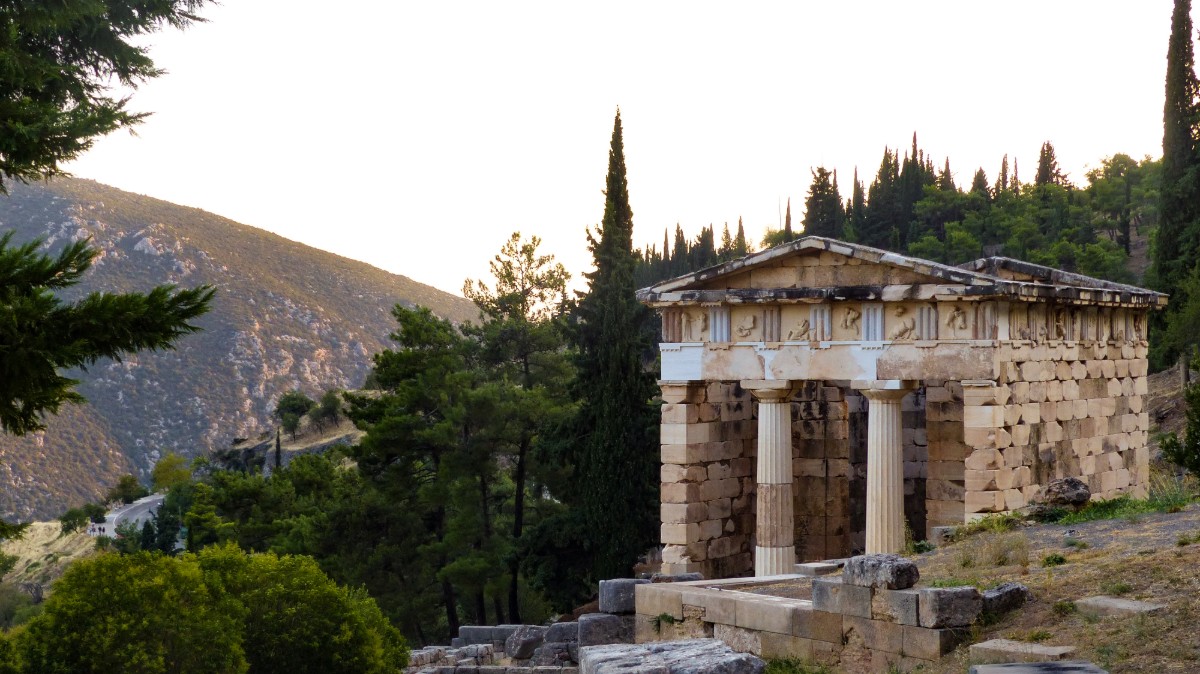
The Oracles in the ancient classical world
Oracles were very popular in Ancient Greece. They were high priests and priestesses with special powers. Their mission was to relay the messages of the gods to the mortals.
Usually, the oracles conveyed the messages in a mysterious, ambivalent manner, which was open to interpretation.
The Delphic Oracle was always a woman, known as Pythia. People consulted her before important decisions regarding marriage, war, or settling new colonies.
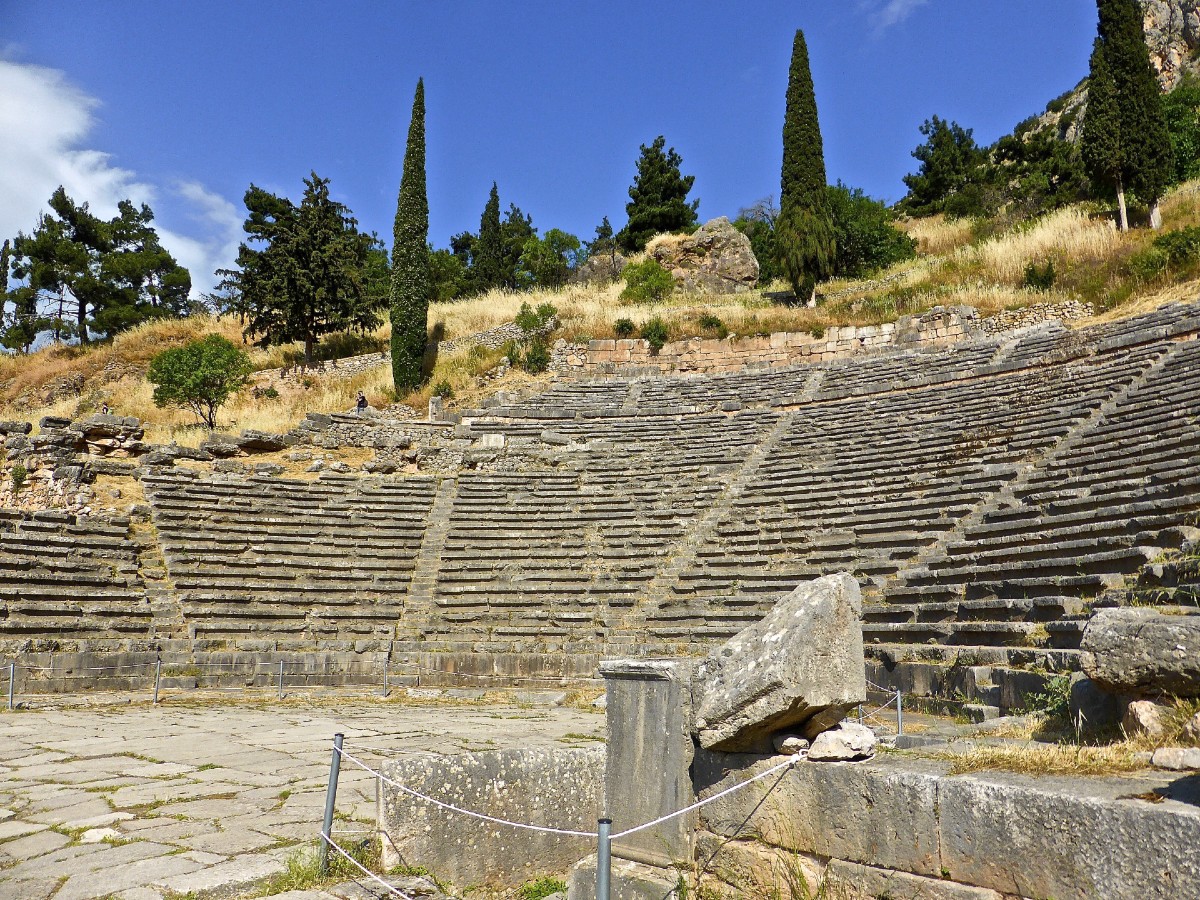
Pythia, the most famous oracle
Pythia was the most reliable Oracle in Ancient Greece. People visited from all the Greek cities and Greek colonies around the world, to consult the high priestess.
The Oracle had to follow a certain ritual before giving a prophecy. She first took a bath, drank water from the nearby sacred spring of Kastalia, and chewed on bay leaves.
She then sat on a tripod in the adyton, an off-limits room inside the temple of Apollo. This is where she inhaled an ecstasy-inducing smoke, which was likely produced by burning certain hallucinogenic plants along with methane.
Pythia delivered her prophecies while she was in a state of euphoria, or ecstasy. The priests would then interpret her dubious and ambiguous messages.
Given Apollo’s absence in winter, Pythia was only available in spring, summer and autumn. She delivered her prophecies just on one day per month.

The importance of the Oracle among Ancient Greeks
The importance of the Oracle in Delphi reached its peak between the 6th and 4th centuries BC.
Pythia’s powers diminished during the Roman period, after the 3rd century BC. However, the rituals continued for several centuries.
During the 4th century AD, the Byzantine emperor Theodosius terminated the Oracle. Like many other ancient sites in Greece, the great pan hellenic sanctuary fell into disuse.
Games and festivals in Ancient Delphi
Apart from being home to the Ancient Sanctuary of Apollo and the Oracle, Delphi served numerous other purposes.
Although the site was primarily dedicated to Apollo, other gods were also worshipped in the area. These include Apollo’s sister Artemis, Athena, Zeus, Poseidon, Hermes and Dionysus.
Several cultural events and athletic games took place in this beautiful area of Greece. The most famous festival was the Pythian Games, celebrating the death of Python.
The Pythian Games included several athletic competitions, as well as musical and theatrical events, to honour Apollo. They were organized every four years, and were second in importance only to the Olympic Games.
Pausanias, the great geographer, visited Delphi in the 2nd century AD and described the site in great detail.
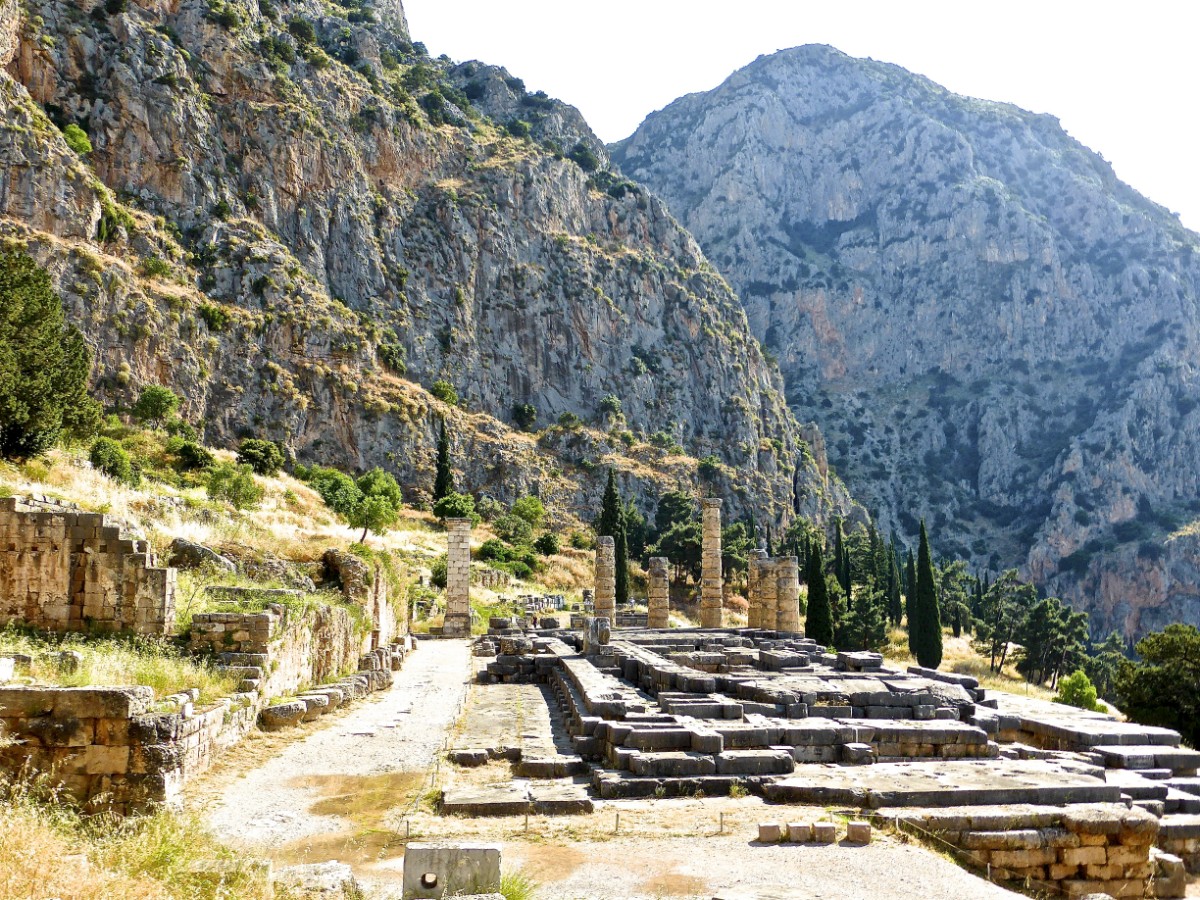
The Archaeological Site of Delphi today
Excavations in the area of Delphi began in the 19th century. They were initially undertaken by German archaeologists, and later by the French school in Athens.
The statues, inscriptions and other artifacts which have been discovered, offer great insights on life in Ancient Greece.
Today, visitors can see the remains of temples and most prominent edifices, many of which have been partially restored. They can also visit the superb archaeological museum, where hundreds of artifacts are exhibited.
Given its incredible natural beauty, it’s not surprising that a few directors have chosen to include Ancient Delphi in their movies about Greece.
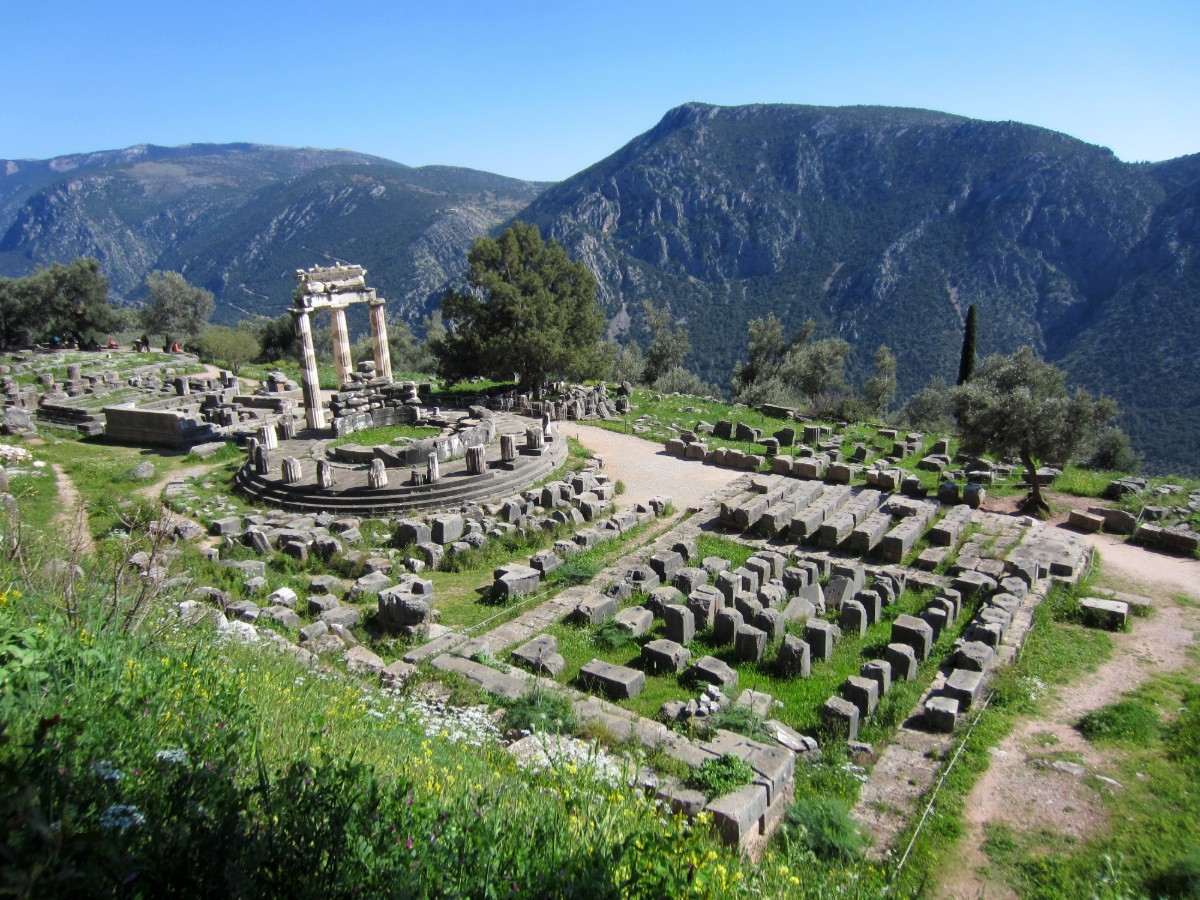
Main buildings in the site of Delphi
Visitors will follow the Sacred Way, a winding path leading to the temple of Apollo. After its construction, the temple was rebuilt and restructured numerous times. The version we see today dates from 330 BC.
The Delphic maxims, that sum up physical and moral values of the times, were inscribed on the temple’s walls.
Another important building is the Athenian Treasury. It was built after the battle of Marathon, as a place to store ornate treasuries and other precious objects retrieved after the battle.
(Note: Here is some more info about the battle and the Athens Classic Marathon).
The iconic theatre of Delphi hosted the drama and music competitions of the Pythian Games. Like other ancient theatres in Greece, it was also used for public gatherings.
Scattered around the site, you can also see remains of the original settlement, altars and cemeteries of the religious center of Delphi.
The Delphi Stadium
One of my favourite spots is the Delphi stadium, on the top of the hill. Climbing up might be a bit of a challenge, especially on a hot summer day, but the views of the surrounding mountains from up the top are really worth it.
Across the street from the main site, you can visit the Athena Pronaia sanctuary. Not everyone makes it here, and it’s a shame, as it’s really impressive!
More information about the individual monuments is available on the official website of the archaeological site of Delphi.
Note: The site is quite large. If you are visiting in summer, bring with you a large bottle of water, a hat, sunglasses and sunscreen, and try to avoid the hottest hours of the day. Here are some more tips on how to stay cool in summer.
Have a look at this wonderful video of a fantastic performance that took place in Ancient Delphi in summer 2023. I was there and it was fab!

The Delphi Archaeological Museum
The archaeological museum of Delphi is one of the most important museums in Greece, and has recently been refurbished to high standards.
Visitors will see sculptures, statues and other artifacts, showcasing life in the wider area of Delphi since Apollo’s cult was established.
Among its most famous exhibits is the Charioteer of Delphi, one of the finest bronze statues ever made in Greece. You can also see a fantastic collection of gold and ivory statues and other incredible objects.
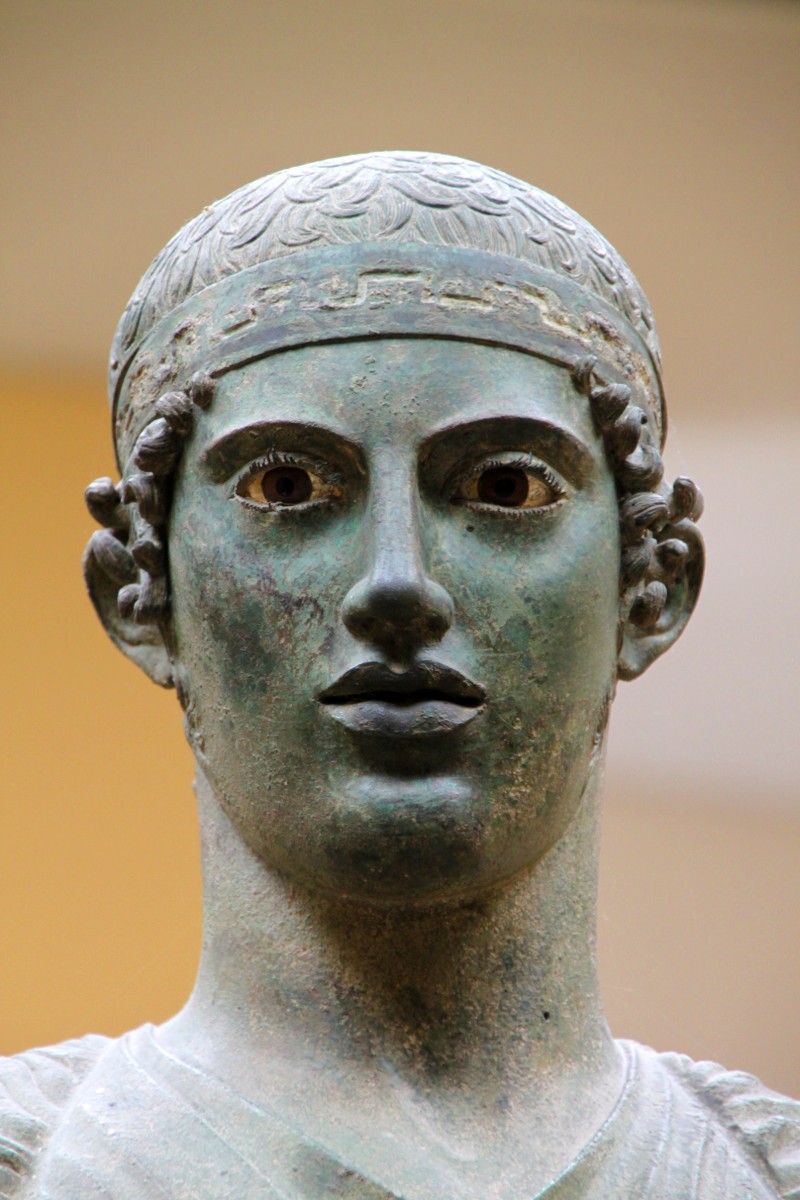
FAQs about Ancient Delphi
Here are a few questions visitors often ask:
Where is the site of Delphi?
The archaeological site of Delphi is located in the regional unit of Fokida in Central Greece, about 3 hours away from Athens.
What is the most sacred site of Delphi?
The focal point in Delphi was the grand temple of Apollo, dedicated to the God of light. Here is where the Delphic Oracle, Pythia, delivered her prophecies.
What is the Delphi famous for?
Delphi was the center of the ancient Greek world. The site was home to the Delphic oracle, Pythia, a high priestess of Apollo who was famous for her ambiguous prophecies. She was the most powerful oracle in ancient Greece.
Does the Oracle of Delphi still exist?
No, the Oracle of Delphi was terminated in the 4th century AD. However, when you visit today you will instantly notice the special energy of the area!
Is Delphi worth visiting?
Absolutely. Delphi is among the most important ancient sites in Greece, and its location is just stunning. You can easily visit Delphi, either on your own or with a tour, on a day trip from Athens.
More travel guides about Greece
I hope you have enjoyed this article about Ancient Delphi! You might also be interested in these other articles about Greece:
- Top Archaeological Sites in Greece
- The Temple of Poseidon at Cape Sounion
- Best time to go to Athens
- Greece tourist attractions – Places to visit in Greece
- How many days in Santorini do you really need?

Hi! I’m Vanessa from Athens and I love travelling around Greece and the Greek islands. Ancient Delphi has a special energy, and is an easy day trip from Athens – I’ve visited a few times and love returning now and then. Follow me on my social media:

This is a good introduction of Delphi, thanks. We like to stay in Delphi for Easter Saturday and Sunday 2023. Can you recommend a local family run accommodation? thank you. Rebekah
Hi! I am not sure if you mean Greek Easter, so the weekend 15/16 April? If this is the case, I recommend you stay at Arachova village, where there are traditional celebrations for Greek Easter. Ancient Delphi will be closed on Easter Sunday, and will have irregular opening hours on Good Saturday, 8:30 – 16:00.
So, if you want to stay in Arachova, here are a couple of choices:
Nefeles
Agiaz
Panos’ house
If you prefer to stay at Delphi, you will notice there are more hotels – check out this apartment
Hope this helps!